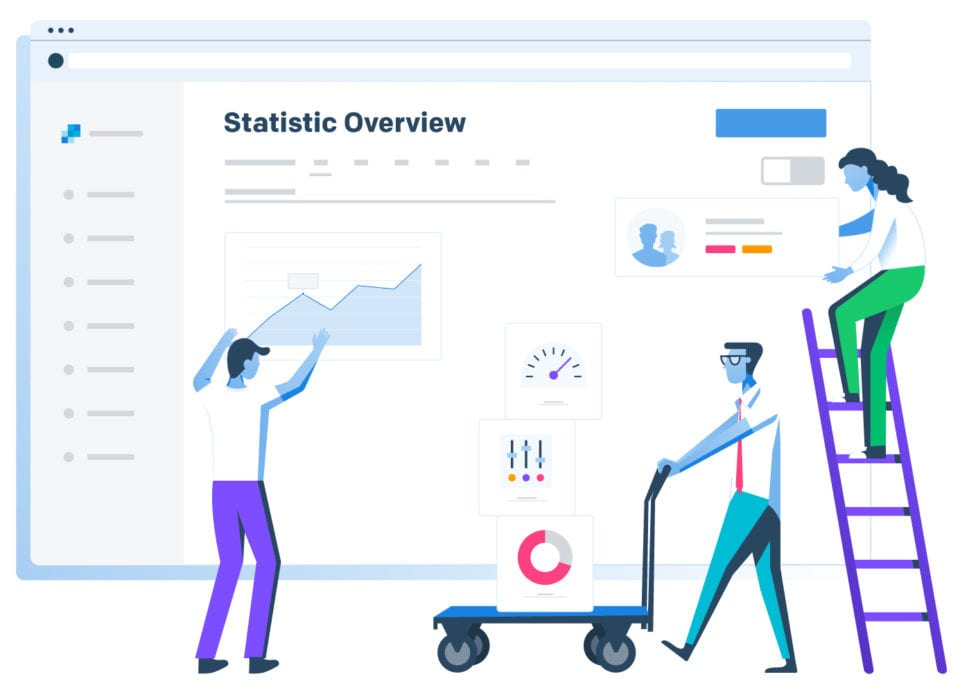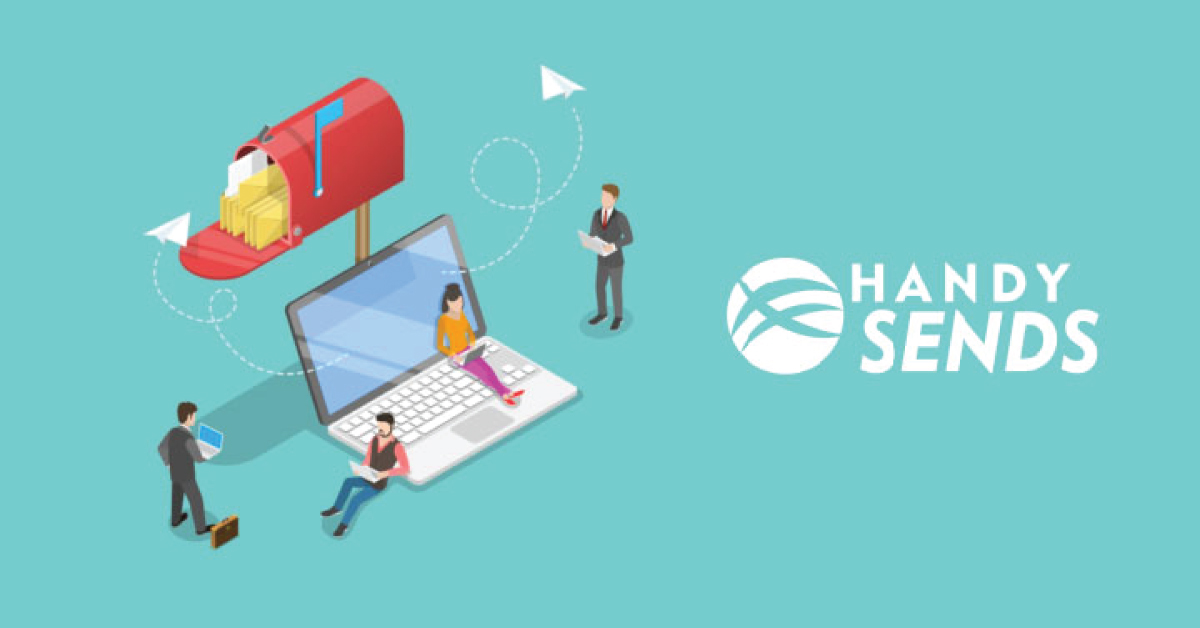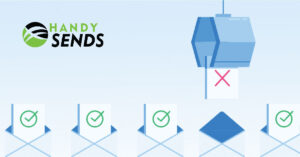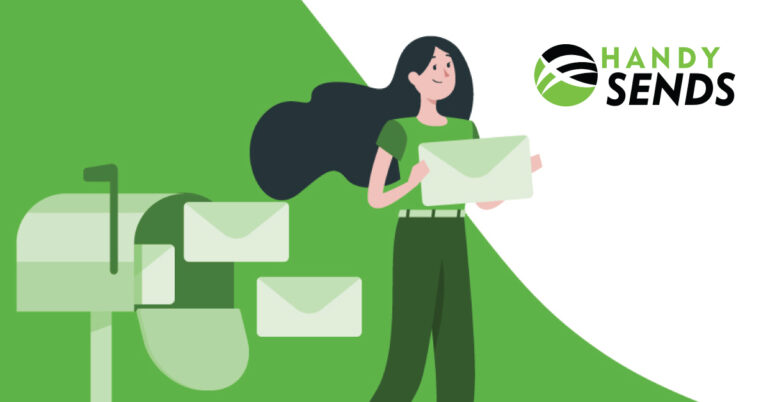28 Email Marketing Best Practices Tips for 2021
Why Email Marketing?
Email marketing serves as a primary component of customer acquisition programs for companies across all industries.
But if you’re responsible for maintaining the day-to-day details of your company’s email marketing program, you may feel like there are so many elements to keep track of to get your email program *just right*.
To help, we’ve compiled our top tips to empower and inspire you to create your best email marketing campaigns yet. Here’s what you’ll learn:
- 2021’s most important email marketing best practices
- The latest email marketing tips and tricks for reaching the inbox
- Email marketing design best practices for crafting beautiful, engaging campaigns
- Updated information for helping you find the latest and great email marketing guides and resources
Email marketing strategy and preparation
- Get to know your audience
A deep understanding of your recipient audience is one of the most important aspects to take stock of before you start emailing them. Your audience is more than just a demographic group. Ask yourself and try to address the following questions in as granular detail as possible:
- How and when do they prefer to be communicated to?
- Is there a specific vernacular, or slang even, that might resonate with them more than others (another great element to A/B test)?
- What types of actions or activities distinguish your audience from the general population?
You’re unlikely to address these questions completely the first time around, but the beauty of email marketing is that, over time, you will amass critical insights and data about your recipients so that you can make intelligent changes to your program in your proceeding email marketing campaigns.
- Experiment to see what resonates
It’s important to A/B test every part of your email, from subject lines to your calls to action (CTAs). Some tips to keep in mind during your tests (checklist feature):
- Only test one element at a time (otherwise your results will be inconclusive)
- Make sure you have a significant sample size in your testing
- Once you find a winning element, move onto the next test!
Remember, your product changes, and so do your recipients, so a good email marketer is never done testing.
- Follow a pre-send checklist
Don’t set yourself up for failure on your next email campaign—create a checklist of all the important steps you need to consider before pressing “send.”
We’ve compiled a simple checklist that you can reference, but be sure to add your own items custom to your program to make sure you have a seamless sending experience, every time.
These are the steps to get started:
- Customize your from Name
- Write clear subject lines
- Personalize your content
- Make it easy to unsubscribe
- Disclose your location
- Say “thank you”
When you do make an inevitable mistake (nobody is perfect), it’s a good idea to have a plan for when things go wrong. An apology email may be an appropriate response and, when executed correctly, maintains trust with your users (and it will even help humanize your brand).

- Choose meaningful metrics to track and measure against
Open rates, click-through, click-to-open, and….so. Many. Metrics. Take a breath; it doesn’t have to be complicated.
To determine what metrics are best to monitor, first determine the purpose of your email. For example:
- If you want recipients to read an important update to your terms of service (and the content is directly in your email), provide a compelling and urgent subject line and measure your opens.
- If you want to extend an offer or discount, clicks (and subsequent visits and conversions from your offer) are your main metric to watch.
- Personalize your emails
Personalization isn’t necessarily new for 2021, but it keeps picking up steam and becoming increasingly important for email programs. Batch and blast emails just aren’t going to cut it or result in high conversion and engagement rates.
To personalize your emails, you must first consider what user data you have. We partnered with Segment to show you all the cool ways you can use data to enhance customer experiences.
Try to focus on behavior whenever you can
If you have a highly engaged portion of your email list, personalize content for that user behavior. And for those who rarely open your emails, customize content through a re-engagement email campaign.
- Have a plan for the holidays
It’s the jolliest–and, unfortunately, spammiest–time of the year. Subscribers are already expecting increased promotion and deals leading up to the holiday season, but it’s still important to remain mindful and courteous about your sending so you don’t end up overwhelming your users.
Our delivery experts recommend modifying your preference centers during the holiday season to include a checkbox that asks your subscribers if they’d like to opt into holiday email communications. This helps properly set expectations with your recipients while helping you tailor your holiday email content.
- Quality beats frequency (always)
Email marketing can be a powerful tool for digital communication, but that doesn’t mean that ramping up your email frequency will make your message more effective.
In fact, sending too many emails to your recipients will likely achieve the opposite result. Recipients may unsubscribe if they feel overwhelmed by your communication, or worse they may even decide to mark your email as spam.
Start slow, and test how your audience responds to your email sending frequency.
- Nail your timing
Figuring out the perfect time to send your email is a hot topic. And while we don’t have the silver bullet answer for you, we do have some advice and insight.
Based on our tests, we found that for our Twilio SendGrid marketing emails, Tuesdays were a good day for our recipients to engage. Test this day in your program and if you see success, continue to do so.
Also, consider sending your emails on “off” times, i.e. not on the top of the hour. So for example, send your newsletters at 10:07 am instead of 10 am. Sending at the top of the hour increases the chance that your emails will be delayed and not reach your recipient when you originally intended.
- Reward your VIPs
Your VIP recipients are your biggest brand ambassadors. Subscribers who always open and click (and maybe even share!) your email deserve a little extra attention for their loyalty and engagement. Plus, you can glean valuable information from your VIPs.
Have a new email template or call to action you’d like to try out? It’s a good idea to start with your VIP recipients first. Survey your VIPs to see how you can improve your email program (or highlight what you’re doing right) and be sure to reward them with special offers and discounts. Reward and retain them and you’ll both notice the benefits.
- Review your landing pages
Designing and writing copy for your email campaigns will require a good chunk of your time. But also consider where you are sending your recipients.
Send your recipients to landing pages that make sense based on your goals and email copy and that provides a seamless transition. For example, if you want to direct them to a certain product, send them to the landing page for that product, not your homepage or product line homepage.
Your Email List
- Build your own email list
Whether you started from scratch or inherited a list of email addresses, it’s essential to verify that every name on that list was added organically and by the individual’s own choice and consent.
Immediately remove any rented or purchased email addresses from your email list. Not only will you most definitely experience low engagement (a lot of purchased emails aren’t even real people), but you risk getting list denied by the major ISPs (like Gmail, Yahoo, and Aol) and your accounts with your email service provider (ESP) will probably be shut down.
It may not be the fastest way to build a large email list, but it is the way to curate an engaged recipient base and one that will keep your email delivery rates as high as possible.
- Segment your email list
Email marketing (much like direct marketing) used to be more of a “batch and blast” communication—everyone gets the same message at the same time. These days, you’ll experience higher engagement if you cater your messages to specific characteristics that you know about your customers.
You could segment your email streams according to factors such as:
- What did they purchase lately?
- Where do they live?
- What time are they opening any of your other (transactional, for example) mail?
The more you cater your messages to your subscribers’ tastes, interests, activities, etc., the more likely you are to reach and resonate with your recipients.
- Don’t take unsubscribes personally
At some point in your email campaigns, even if they once opted into your emails, some recipients may not want to hear from you anymore. That’s ok (and a natural part of the email lifecycle), as long as you have a stable unsubscribe system in place for these users.
The ability to unsubscribe from your email program should never be confusing, should be available in one click, and finally, should be instantaneous.
And no matter what, don’t make your users have to log into any sort of account to unsubscribe from emails. Remember: If users can’t find the unsubscribe, they CAN find the SPAM button.
- Clean your list on a regular basis
Although some people will take the time to unsubscribe themselves if they aren’t interested in opening your emails, many will just ignore your emails indefinitely. This can be harmful for your delivery rates and also signals to ISPs that you may not be sending wanted email.
To address this issue, carve out some time each quarter to remove unengaged subscribers from your email list. If they haven’t opened your email in a couple months, you can feel safe removing them.
Email Marketing Design Best Practices
- Keep your email design consistent and on-brand
Whether you’re using a template, hiring a designer (keep in mind not all designers are email designers), or have a developer on hand to code your emails, your email design should align with your overall brand found on your website.
You don’t want your recipient to open your message and have no idea who it came from.
Clicking through from an email to your website should be a fluid experience. Your recipients should know exactly how and where they can take the next step. Design your templates with this in mind.
Here are a few of our top email marketing design best practices—use this as a checklist before sending any campaign:
- Colors align with the brand
- Logo included at top of email (and links back to website)
- Hypertext is short and indicative of the URL destination
- Footer includes relevant company details and unsubscribe links
- Not too much text—not too many images
- Write a subject line your recipients can’t ignore
All editorial components of an email are important, but your subject line is likely going to be where your recipient decides if they open your email or continue to scroll through their already over-crowded inbox.
Try to keep your subject line on the shorter side (3-5) words. Consider writing your subject line after you write the other components of your email so that you can decide what angle you’d like to take.
This also ensures you are focusing on the most news-worthy portion of your email upfront. Finally, provide a clear sense of urgency or action that your recipient can act on.
- Adapt your copywriting for email
Whether you dread or look forward to writing email copy, there are a few high-level pointers that will help you craft engaging copy efficiently and consistently:
These are the steps to get started:
- Determine brand voice
- Write a conversation, not a brochure
- Break up the piees
- Be consistent
- Edit
- Measure
- Stop using no-reply from names
Curious about what to put as your from name? At the very least, remove the no-reply response (e.g. “[email protected]”). Sending an email with a no-reply stifles the impression of having a 1:1 conversation in your email messaging, and is just generally unfriendly.
You may or may not want to use a personal name or company, but the only way to know for sure what will work best for you is to test to see what segment receives the most opens.
- Send a stellar welcome email
It may seem obvious, but give your new subscribers a warm welcome! Welcome emails give you an opportunity to say “hello,” re-introduce yourself, and set expectations for what kind of email your recipients will be receiving from you–and how often.
Welcome emails also provide the perfect opportunity to send subscribers to your preference center so they can adjust the frequency and type of email they’ll be receiving from you. Getting started on the right note can make a world of a difference in keeping your subscribers happy.
Email Marketing Tips for Delivery
- Make it double opt-in
How do your recipients get onto your email list? There are several ways to do this including single opt-in, double, and pre-confirmed opt-in to name a few. We highly recommend that you use a double opt-in method, that requires recipients to not only click a box on your sign-up page, but to follow a link in your email that double confirm that they meant to do that in the first place.
- Send at a consistent cadence
Consistent sending volumes are crucial for maintaining a good reputation with ISPs. Sending 100 emails on Monday and then 100,000 on Tuesday sends a mixed signal. Was that 100,000 campaign just a massive spam send? ISPs probably think so.
Breaking up your sending volumes to a consistent level shows ISPs it’s just business as usual (and you’re not a phisher or spammer). If you do end up sending high volumes of mail, make sure you build up your amount gradually (known as warming up a new sending IP)—send too much email at one time and ISPs will likely throttle your emails which can delay delivery time, frustrate your users, and likely cause a decrease in engagement.
- Follow the rules: GDPR
GDPR started to dominate a lot of email marketing conversations in 2018, and this is expected to continue. The General Data Protection Act (GDPR) applies to the processing of data subjects’ personal data by any size of EU or non-EU organization that provides goods or services to the EU or monitors the behavior of EU users. If you send email to European users, it’s critical to understand the law, and know if you need to make any changes to your program.
We’re not replacing legal advice at all, but we do provide a deep dive into the law, implications, and tips for your email program in our GDPR best practice guide. Finally, although GDPR applies to the EU, following the law for everyone is just a good practice for email marketing in general.
- Know how many IP addresses you need
An IP address is a unique number block that identifies a device using the Internet Protocol (IP) to communicate over a certain network. When it comes to your email, your IP address behavior affects your sender reputation, and how ISPs judge your sending patterns.
Most email service providers (ESPs) provide the option to send email on a shared IP pool or a dedicated IP address. When you’re sending from a dedicated IP address, you are the sole sender and your reputation (and how it affects your deliverability) is yours, and yours alone.
If you’re sending both transactional and marketing email, it’s a good idea to separate those two streams of email. Because transactional email is crucial and requested by your user, don’t risk that delivery by combining it with the reputation of your marketing emails (typically much lower engagement).
How many IPs you add from there will depend on your monthly sending volume.
- Test email rendering every time
There are many ways your email can display depending on your recipient’s browser, inbox provider, and more. But there are tools out there that provide a complete picture of how your emails can render across these options. A couple of tools we use here at SendGrid are Email on Acid and Litmus.
Make sure that browser testing is a part of your pre-send checklist so you can avoid sending emails that don’t render properly. If your recipient can’t see or read your email, they can’t engage, and this can have lasting consequences, especially on your sender reputation.
- Stay up to date with the latest email marketing guides and resources
Email has been around for a long time, but that doesn’t mean it doesn’t change. Best practices emerge, regulations evolve, and email marketing tips ebb and flow. However, keeping up with all the nitty-gritty changes in email can be a challenge.
Well, if you don’t have a partner like us, that is. See, we eat, breathe, and sleep email so you don’t have to. Every year, we publish the latest and greatest email marketing guides and email marketing resources with the updated information you need to keep sending stellar campaigns.
Multichannel Marketing
- Diversify your channels
While email is a tried-and-true platform for reaching your customers, it’s not the only channel at your disposal. According to our Global Messaging Engagement Report, email is the #1 preferred channel, but it’s closely followed by other platforms like SMS and social media.
Give your audience options. They might want to receive your promotional messages in their email inbox and their shipping notifications via SMS. Try experimenting with more channels and monitor your engagement to see the effect. Download our latest Email and SMS Guide to learn how to add text messages to your marketing mix.
- Take advantage of your data
Use your customer support and SMS engagement data to inform your email marketing strategies, and vice versa. You likely already have more data than you know what to do with—now it’s time to put it to good use.
Leverage your call center data to inform your marketing tactics. For example, if your customer called about a shoe-sizing issue, you may follow up with targeted campaigns promoting true-to-size footwear.
- Coordinate cross-channel campaigns
Your email campaign may be the headliner, but it sometimes needs some opening or supporting acts to get momentum going. Consider running pre-targeted campaigns on other channels like Google Search, Facebook, LinkedIn, or other websites.
This not only spreads awareness, but it allows you to start testing your messaging and announcements. For example, you may find that a certain CTA or message resonates better with your audience on LinkedIn and that data could inform your email subject lines.
Takeaways
If you’re interested in putting all of these tips into practice, check out our full-featured email marketing service, Marketing Campaigns. With a flexible workflow, powerful list segmentation, and actionable analytics, Marketing Campaigns helps you build meaningful relationships with your recipients.




Major thankies for the blog. Will read on…